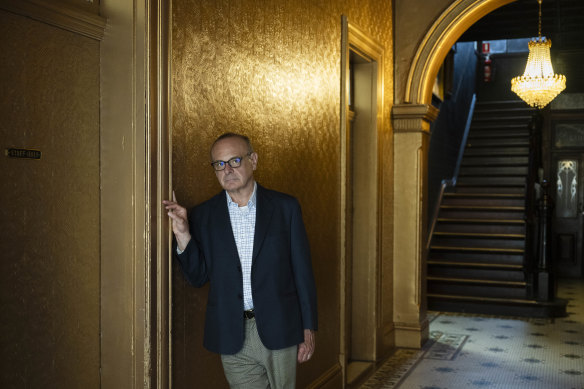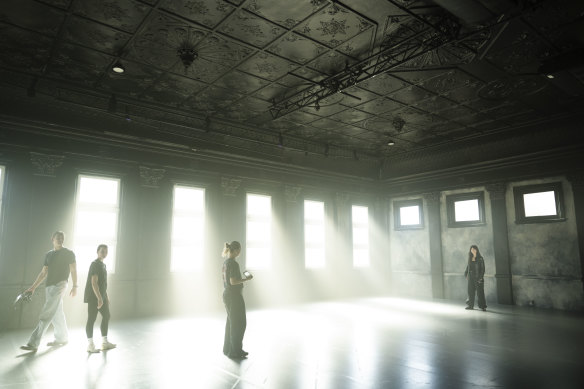
These humble, voluntary-run community operations gave rise to local public libraries, community and neighbourhood centres, and formal systems of adult and technical education.

Greg Khoury is trust chair of the Newtown School of Arts. Credit: Janie Barrett
“These schools of art were examples of early social enterprise,” Khoury said. “They were not government, nor were they religious. They were essentially clubs – they had theatre parties, and they were seats of socialisation.
“They became the forerunner of the public library and the push for public education, and after World War II, they mostly fell into disuse.”
Use of the Newtown School of Arts declined after WWII. In the late 1970s, 5 Eliza Street was occupied by a group of visual artists who rented the upstairs ballroom to radio script readers for $5 a session.

The ballroom of the Newtown School of Arts.Credit: Janie Barrett
Khoury stumbled upon the venue in 2008 when he heard music drifting from an upstairs window.
“I first got involved when I heard the wafting sound of Cole Porter from the street and walked up the stairs to a dance class led by a veteran stalwart trustee, Frank Turner. I thought, ‘What an extraordinary place’. I couldn’t believe an interior like that could survive in Sydney at all.”
He joined the trust, helped re-establish its governance of the building and embarked on a “slow burn” revival. More recently, theatrical producer Rodney Rigby mounted a site-specific immersive theatre production that revamped the building.
For more than a decade, until the pandemic, the venue was used by the Sydney Fringe Festival.
“In a city often dominated by news of venue closures and prohibitive cost-of-business pressures, the proposition of a safeguarded site that has been purposely designed and created to accommodate the needs of the local independent sector is brilliant,” says Fringe director Kerri Glasscock.
Loading
“It is very rare in Sydney that a purpose-built theatre is created, especially for the small to medium sector. This will be game-changing for the sector, and the proposed infrastructure will fill a greatly needed gap in the venue ecosystem.”
What’s next?
Once its plan is approved, the trust will need to raise $2 million to match funding donated by the former Coalition government toward capital works. It’s a third of the way to its target, after contributions from private supporters including Khoury, Lyndi Adler and Anni Rowland-Campbell.
The initial plans submitted last year have undergone several revisions. Project manager Daniel Ballantyne said the challenge was to create a building that acknowledged its heritage and was fit for its new social purpose.
“The ballroom is to be the jewel in the crown of the building – it’s a natural, flexible theatre,” he said. “The idea of the extension is to ensure that the space is open to full theatrical use, and it complies with modern building standards.”
Khoury believes the operating model could be a template for activating other schools of arts and small venues.
“It will make a surplus, but the surplus will be retained by the trust to maintain the building as a cultural asset and invest in creative work,” he said.
Find out the next TV, streaming series and movies to add to your must-sees. Get The Watchlist delivered every Thursday.









 Add Category
Add Category